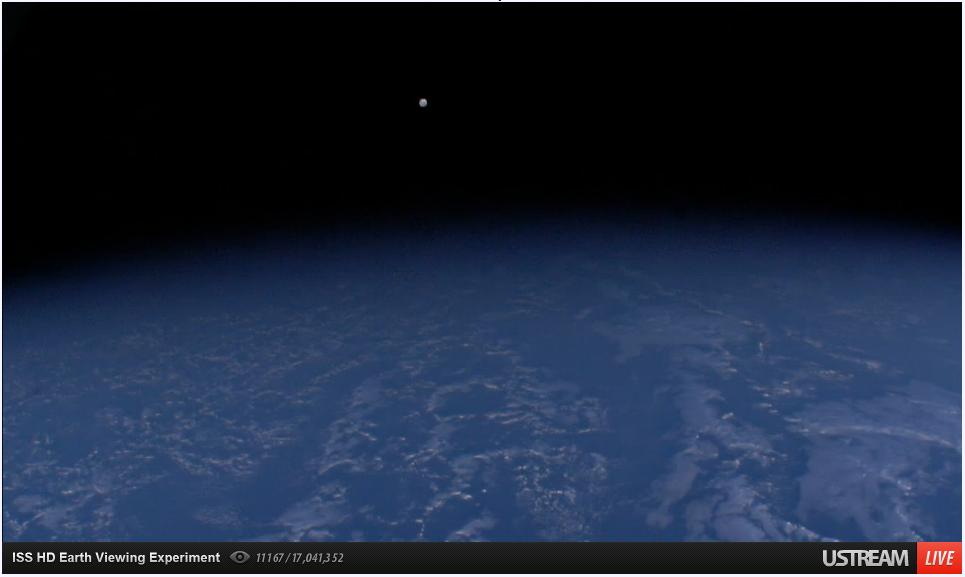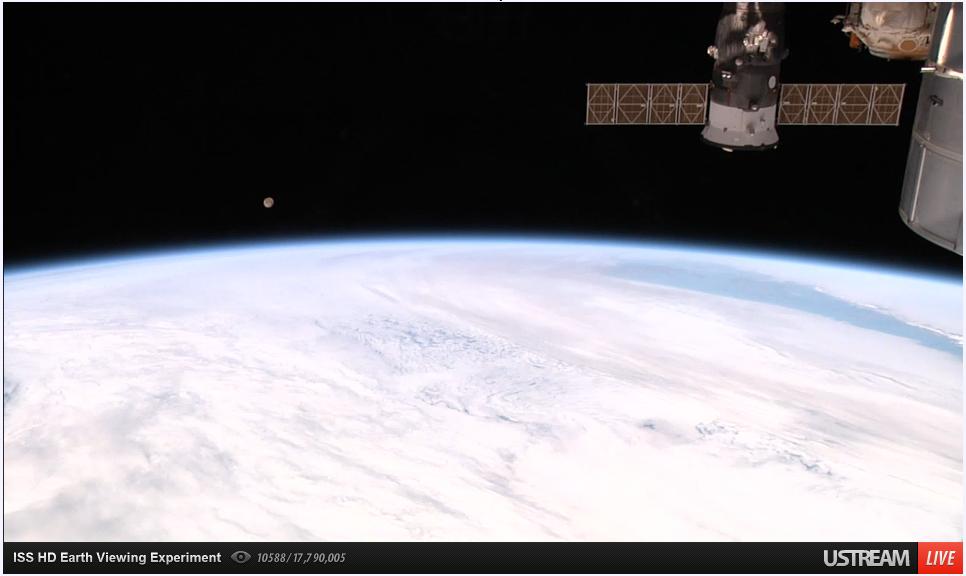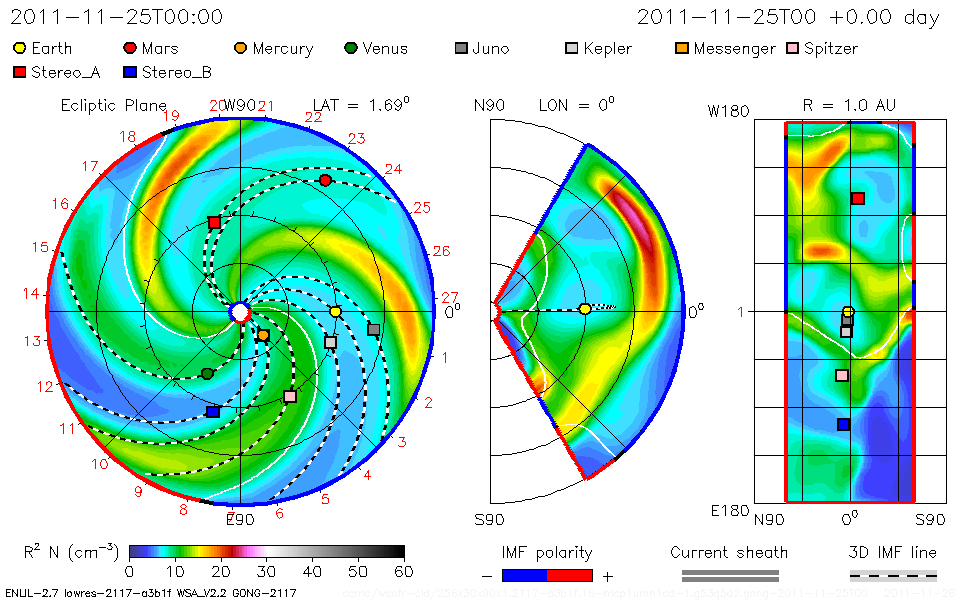This is an interesting thing to watch live streaming from the International Space Station. It is a high definition view of the Earth below taken from one of four HD cameras aboard the ISS. I screen captured the image above of somewhere over Southeast Asia as the ISS sailed off to the south pacific. Read the entire description of the experiment at APOD.
This is a good site to find out the current location of the ISS. Click on the image to enlarge.
UPDATE: I watched the streaming video as the ISS approached the terminator and was surprised to see the full moon rising in the distance.
UPDATE II: This is looking back at the setting moon at about 1815UTC 5/16/2014 as the ISS passed into western Canada.
Click on the images to enlarge.








